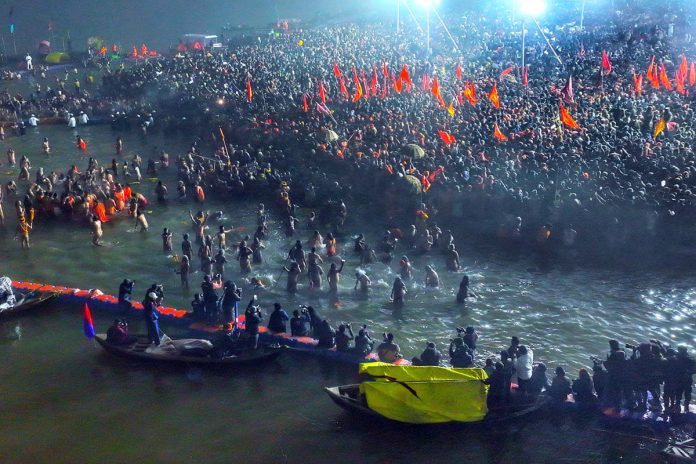The Maha Kumbh Mela is not only the largest religious gathering in the world but also a vibrant spiritual hub where ancient traditions and practices come to life. A key highlight of this event is the participation of 13 recognized Akharas, representing various sects of Sanatan Dharma. These Akharas play a central role in the cultural and spiritual fabric of the Kumbh Mela.
What are Akharas?
Akharas are monastic institutions or sects that bring together sadhus (ascetics) under shared spiritual traditions and practices. They function as centers for learning, spirituality, and governance for their members. Based on their primary deity of worship, Akharas are broadly categorized into three groups:
- Shaiva Akharas: Devotees of Lord Shiva.
- Vaishnav Akharas: Followers of Lord Vishnu.
- Udasin Akharas: Primarily adherents of Guru Nanak’s teachings.
List of the 13 Recognized Akharas
Each Akhara is unique, with distinct traditions, leadership, and spiritual focus. The 13 officially recognized Akharas are:
- Juna Akhara
- Niranjani Akhara
- Mahanirvani Akhara
- Atal Akhara
- Ahwan Akhara
- Nirmohi Akhara
- Anand Akhara
- Panchagni Akhara
- Nagpanthi Gorakhnath Akhara
- Vaishnav Akhara
- Udasin Panchayati Bada Akhara
- Udasin Naya Akhara
- Nirmal Panchayati Akhara
Hierarchical Structure of Akharas
Each Akhara operates with a well-defined hierarchy to manage its spiritual and administrative functions:
- Acharya Mahamandaleshwar: The highest-ranking authority, responsible for the spiritual and organizational guidance of the Akhara.
- Mahamandaleshwar: Second in command, overseeing key religious and cultural activities.
- Shrimahant: Handles the Akhara’s daily administrative affairs.
Naga Sadhus: Icons of Renunciation and Penance
Integral to Shaiva Akharas, Naga Sadhus embody ultimate renunciation. These ascetics renounce all worldly attachments, including clothing, dedicating their lives to spiritual growth and self-realization. Their processions, known as Peshwai, are among the most anticipated events of the Kumbh Mela, symbolizing spiritual discipline and strength. The grand entry of Naga Sadhus into Prayagraj traditionally marks the beginning of the festival.
The Kinnar Akhara
While not officially recognized by the Akhara Council, the Kinnar Akhara, affiliated with the Juna Akhara, represents the transgender community. It has become a significant symbol of inclusivity within Sanatan Dharma.
Ceremonial Highlights at the Kumbh Mela
- Peshwai Processions: The Akharas’ ceremonial arrival into the Kumbh city is marked by grand parades featuring saints on elephants, horses, and chariots, reflecting their rich traditions.
- Royal Baths: On six auspicious days of the Maha Kumbh, Akharas lead sacred bathing rituals believed to purify the soul and grant salvation. Key dates for the 2025 Maha Kumbh include:
- January 13, 2025: Paush Purnima
- January 14, 2025: Makar Sankranti (Royal Bath)
- January 29, 2025: Mauni Amavasya (Royal Bath)
- February 3, 2025: Basant Panchami (Royal Bath)
- February 12, 2025: Maghi Purnima
- February 26, 2025: Mahashivratri
Akhara-Specific Traditions
- Juna Akhara: Known for its large contingent of Naga Sadhus.
- Nirmohi Akhara: Focuses on Vaishnav traditions and devotion to Lord Vishnu.
- Mahanirvani Akhara: Highlights Hatha Yoga and rigorous ascetic practices.
- Udasin Akharas: Integrate teachings from both Hinduism and Sikhism, emphasizing detachment from worldly life.
Spiritual Importance of Akharas at the Maha Kumbh
The Akharas are custodians of India’s spiritual heritage, guiding millions of devotees at the Kumbh Mela. Their diverse traditions and practices embody the unity in diversity of Sanatan Dharma, offering a profound insight into India’s ancient spiritual wisdom. Witnessing their rituals and ceremonies is a transformative experience for pilgrims, connecting them deeply with the sacred essence of the festival.

